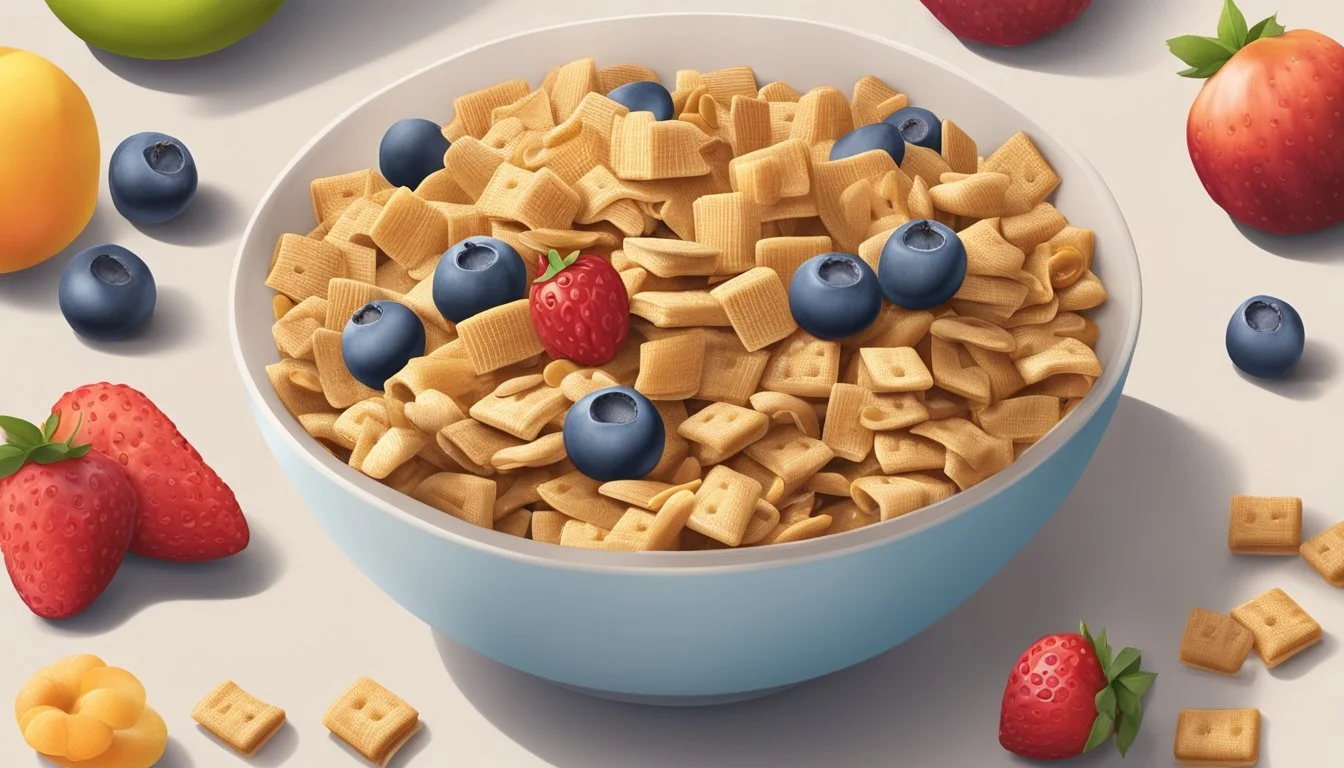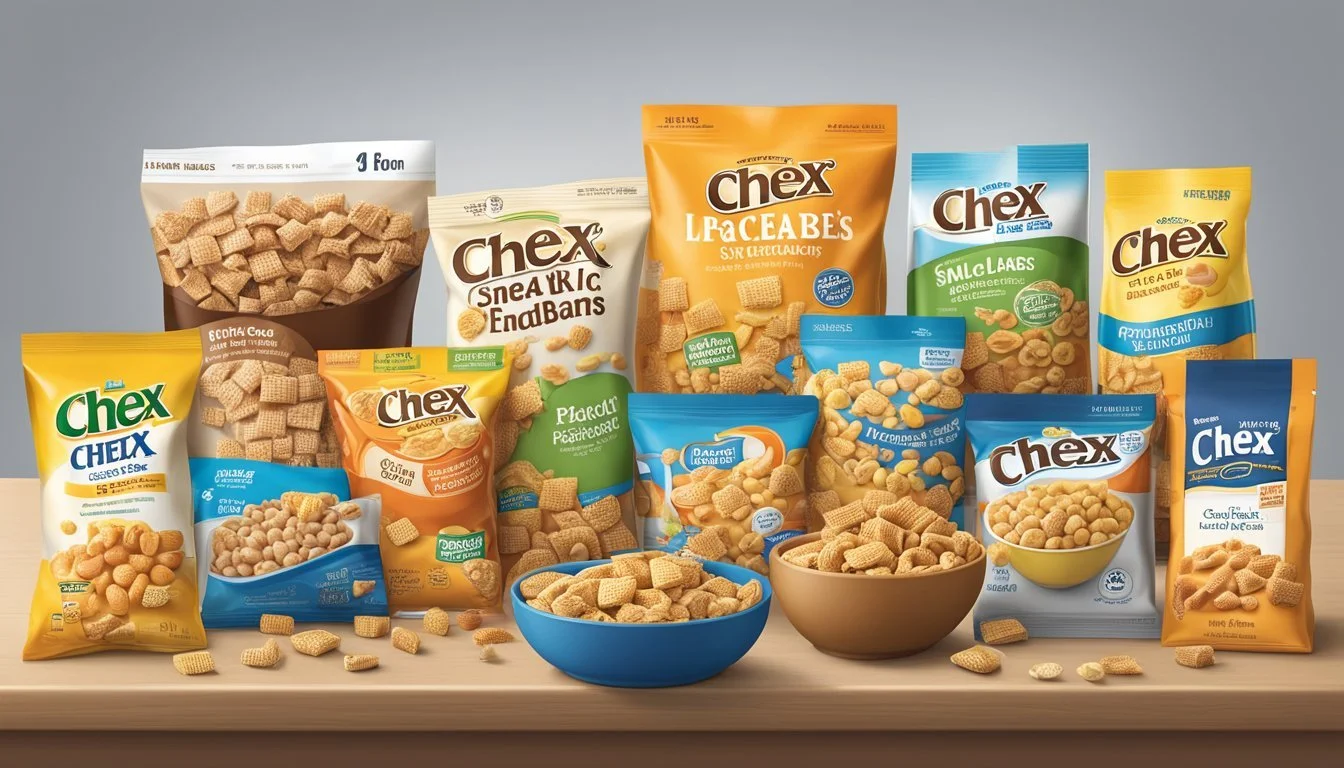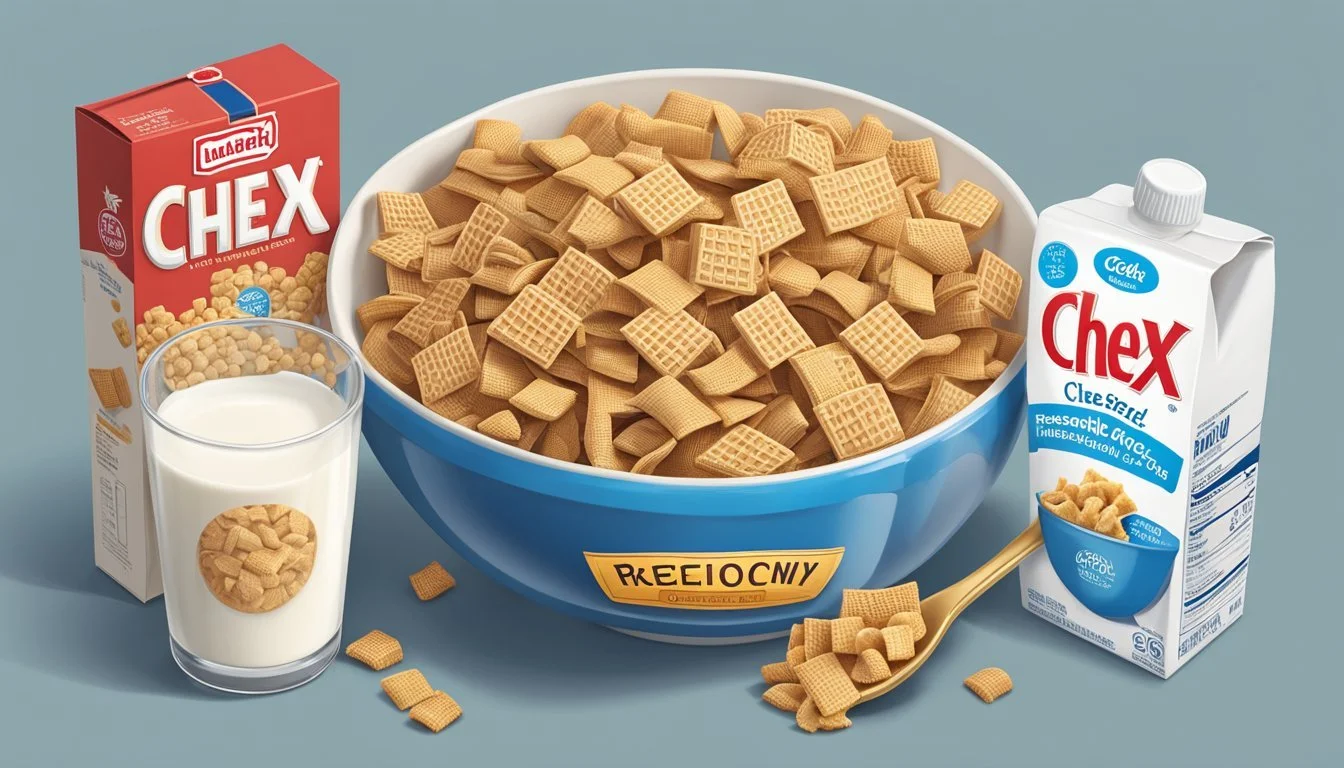Chex Nutrition Facts & More
A Balanced Breakfast Option
Chex cereals offer a range of nutritional options for breakfast or snacking. These popular cereals come in various flavors, including Rice, Wheat, and Corn Chex. A one-cup serving of Chex cereal typically contains between 100-150 calories, with the majority coming from carbohydrates.
The nutritional profile of Chex cereals varies slightly depending on the specific variety. Rice Chex, for example, provides 101 calories per cup, while Wheat Chex offers a higher protein content at 10 grams per serving. Corn Chex falls in the middle, with about 120 calories per cup.
Chex cereals are generally low in fat, with most varieties containing only 1-1.5 grams per serving. They also provide essential vitamins and minerals, including vitamin D, calcium, and iron. When paired with milk, Chex cereals can contribute to a balanced breakfast or serve as a versatile ingredient in various recipes.
Chex Compared to Other Breakfast Cereals
Nutritional Values of Chex Cereals
Chex cereals offer a range of nutritional profiles, varying by flavor and type. Each variety provides different amounts of calories, macronutrients, vitamins, and minerals.
Calories and Serving Size
A typical serving size of Chex cereal is 1 cup (approximately 63 grams). The calorie content ranges from 140 to 220 calories per serving, depending on the specific variety.
Wheat Chex contains about 217 calories per serving, while other varieties may have slightly different calorie counts. The serving size provides a moderate amount of energy for breakfast or a snack.
Macronutrient Profile
Chex cereals are primarily carbohydrate-based, with most varieties containing 45-52 grams of total carbohydrates per serving. This accounts for about 90% of the total calories.
Protein content is modest, ranging from 3 to 6 grams per serving. Wheat Chex offers a higher protein content at 6.2 grams per serving.
Fat content is generally low, typically 1-2 grams per serving. Wheat Chex contains 1.1 grams of fat, contributing only 4.7% of its total calories.
Dietary fiber varies between 2 to 8 grams per serving, with Wheat Chex providing 7.7 grams.
Vitamins and Minerals Content
Chex cereals are fortified with various vitamins and minerals. Common additions include:
B vitamins: Thiamin, riboflavin, niacin, vitamin B6, and vitamin B12
Folic acid
Iron
Zinc
Vitamin D
Calcium
The exact amounts vary by variety. Many Chex cereals provide 10-25% of the daily value for these nutrients per serving.
Some varieties may also contain vitamin A, vitamin C, and vitamin E. Phosphorus and magnesium are naturally present in some types, particularly those made with whole grains.
Added Sugars and Sweeteners
Sugar content in Chex cereals varies significantly between varieties. Plain versions like Wheat Chex contain about 6.5 grams of sugar per serving, mostly from natural sources.
Flavored varieties may have higher sugar content due to added sweeteners. Common sweeteners used include sugar, high fructose corn syrup, and molasses.
The amount of added sugars ranges from 1 to 12 grams per serving, depending on the specific flavor. Consumers concerned about sugar intake should check the nutrition label for precise information on each variety.
Health Implications
Chex cereal has several nutritional components that can impact health in different ways. Its fiber content, sugar levels, and fat profile all play important roles in how this cereal may affect the body.
Dietary Fiber and Digestive Health
Wheat Chex provides 8 grams of fiber per serving, which is 32% of the daily value. This high fiber content supports digestive health by promoting regular bowel movements and feeding beneficial gut bacteria. Fiber also helps maintain feelings of fullness, potentially aiding in weight management.
A fiber-rich diet is associated with lower risks of heart disease, stroke, and type 2 diabetes. The whole grain wheat in Chex contributes to its fiber content, offering additional health benefits like reduced inflammation and improved blood sugar control.
Sugar Content and Metabolic Health
Chex cereal contains added sugar, though in moderate amounts compared to many other breakfast cereals. The sugar content varies between flavors, with some varieties having more than others.
Excessive sugar intake is linked to obesity, type 2 diabetes, and heart disease. However, when consumed in moderation as part of a balanced diet, the sugar in Chex is unlikely to cause significant health issues for most people.
It's important to consider the overall sugar intake throughout the day, not just from cereal. Pairing Chex with low-sugar toppings like fresh fruit can create a more balanced breakfast option.
Fats Profile and Cardiovascular Health
Chex cereal is generally low in fat, with most varieties containing less than 2 grams per serving. This low fat content can be beneficial for those monitoring their calorie intake or managing heart health.
The cereal contains small amounts of polyunsaturated and monounsaturated fats, which are considered heart-healthy when consumed in place of saturated fats. Chex is free from trans fats, which are known to increase the risk of heart disease.
While the fat content is low, the type of fats present in Chex contributes to a more favorable lipid profile when compared to snacks high in saturated fats.
Dietary Considerations
Chex cereals offer options for various dietary needs, including gluten-free choices and potential suitability for weight management. Understanding the nutritional profile and allergen information can help consumers make informed decisions.
Gluten-Free Options
Rice Chex was the first ready-to-eat, gluten-free cereal in the Chex line. This makes it a suitable option for individuals with celiac disease or gluten sensitivity. The gluten-free status of Rice Chex allows it to be used as a key ingredient in many gluten-free recipes, such as the Original Nuts and Bolts Chex Mix.
Other Chex varieties may also be gluten-free, but it's essential to check the packaging for confirmation. Gluten-free Chex cereals provide a safe breakfast option for those avoiding gluten while still enjoying a crunchy, satisfying meal.
Allergy Information
Chex cereals are made with different grains and ingredients, so allergy considerations vary by flavor. Rice Chex, being made primarily from rice, may be suitable for those with wheat allergies. However, it's crucial to check the ingredient list and allergen warnings on each specific Chex product.
Some Chex varieties may contain nuts, soy, or other common allergens. Cross-contamination during manufacturing is also a potential concern. Consumers with food allergies should carefully read labels and contact the manufacturer if they have any doubts about the product's safety.
Suitability for Weight Loss Efforts
Chex cereals can be incorporated into weight loss efforts when consumed in moderation. A typical serving of Chex cereal contains around 100-130 calories, making it a relatively low-calorie breakfast or snack option. The fiber content, though modest at about 1-2 grams per serving, can contribute to feelings of fullness.
When paired with low-fat milk or a milk alternative, Chex can provide a balanced meal with protein and carbohydrates. However, consumers should be mindful of portion sizes and added sugars in flavored varieties. For weight loss, it's best to choose plain or lower-sugar options and control serving sizes.
Labeling and Serving Recommendations
Rice Chex cereal labels provide essential nutritional information and serving guidelines. These details help consumers make informed choices about their diet and portion control.
Understanding Daily Values
Daily Values (DV) on Rice Chex labels show the percentage of recommended daily nutrient intake per serving. A serving contains 250mg of sodium, which is 11% of the DV. Total carbohydrates are 23g, representing 10% of the DV. Added sugars are 3g, equaling 12% of the DV for men and women.
The FDA suggests a maximum of 50g of added sugars daily. However, some health experts recommend lower limits: 25g for women and 37g for men.
Portion Sizes and Recommendations
A standard serving of Rice Chex is typically 1 cup (27g). This portion provides 100 calories, 0g of fat, and 2g of protein. The cereal box usually contains multiple servings, often around 12-14 per container.
For a balanced breakfast, combine a serving of Rice Chex with low-fat milk. This combination increases the nutritional value, adding calcium, vitamin D, and extra protein to the meal.
Rice Chex can also be used in recipes like Chex Mix. When using the cereal in recipes, it's important to consider how it affects the overall nutritional profile of the dish.
Chex Product Varieties
Chex offers a diverse range of cereal flavors and ingredients to suit different tastes and dietary preferences. The brand has expanded beyond its original offerings to include both classic options and creative special editions.
Classic Flavors and Ingredients
Rice Chex, Corn Chex, and Wheat Chex form the foundation of the Chex product line. These classic varieties provide gluten-free and whole grain options for consumers.
Rice Chex, made from rice, offers a crispy texture and mild flavor. Corn Chex provides a heartier crunch with its corn-based formula. Wheat Chex delivers a nutty taste and more robust texture.
Honey Nut Chex combines the classic rice base with a sweet honey and nutty flavor profile. Chocolate Chex satisfies sweet cravings with its cocoa-infused squares.
Special Editions and Collaborations
Chex has introduced limited-time flavors to keep its product line fresh and exciting. Blueberry Chex brings a fruity twist to the cereal aisle, while Cinnamon Chex offers a warm, spicy note.
Maple Brown Sugar Chex combines two popular breakfast flavors in one cereal. This variety adds a touch of indulgence to the morning routine.
Peanut Butter Chex caters to nut butter enthusiasts with its rich, creamy flavor. This variety provides a protein boost to the traditional Chex formula.
Chex also partners with other brands for special edition cereals, creating unique flavor combinations and limited-time offerings that generate consumer interest.
Consumer Resources
Several tools and resources are available to help consumers make informed decisions about Chex cereal nutrition. These include comprehensive food databases and comparative analyses with other popular cereal brands.
Nutritional Databases and Apps
Food databases and calorie counter apps provide detailed nutritional information for Chex cereals. Many of these resources allow users to search for specific products and view their calorie content, macronutrients, and micronutrients. Some popular apps include MyFitnessPal and Fooducate, which offer extensive food libraries.
These tools often display the Recommended Daily Intake (RDI) percentages for various nutrients, helping consumers understand how Chex fits into their overall diet. Users can typically find information on fiber content, sugar levels, and vitamin fortification for different Chex varieties.
Comparisons to Other Brands
Consumers can find comparisons between Chex and other cereal brands through various online platforms and nutrition-focused websites. These comparisons often highlight differences in calorie content, sugar levels, and fiber amounts across different cereal options.
Many resources provide side-by-side nutritional breakdowns, allowing consumers to easily compare Chex varieties with similar cereals from other manufacturers. Some websites offer visual charts or tables that display key nutritional values for multiple brands at once.
These comparisons can help consumers make choices based on their specific dietary needs or preferences, such as lower sugar content or higher fiber options.
Purchasing and Brand Information
Chex cereal is widely available through various retail channels and online platforms. The brand offers several options for consumers to purchase their products and engage with the company.
Availability and Retail Partners
Chex cereals can be found in most major grocery stores, supermarkets, and big-box retailers across the United States. Walmart, Target, Kroger, and Publix are among the prominent retailers that stock Chex products.
Amazon also carries a wide selection of Chex cereals, often offering bulk purchasing options and subscription services. Many online grocery delivery platforms like Instacart and Shipt include Chex in their product catalogs.
General Mills, the parent company of Chex, maintains partnerships with various e-commerce platforms to ensure widespread availability. Some specialty health food stores and natural grocers may carry specific Chex varieties that cater to dietary restrictions.
Affiliate Programs and Endorsements
General Mills operates an affiliate program that allows content creators and influencers to earn commissions on qualifying purchases of Chex and other General Mills products. This program is typically managed through affiliate networks like ShareASale or CJ Affiliate.
Chex has collaborated with professional athletes and nutritionists for endorsements, highlighting the cereal's role in a balanced diet. The brand has also partnered with food bloggers and recipe developers to create Chex-based snacks and dishes.
Some retailers, like Amazon, offer their own affiliate programs that include Chex products. Through the Amazon Associates program, website owners can earn commissions by promoting Chex cereals and related items.
Chex occasionally sponsors events or partners with organizations to increase brand visibility. These partnerships often focus on gluten-free living or family-oriented activities, aligning with the brand's core values and product offerings.









